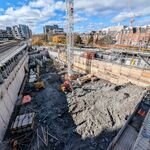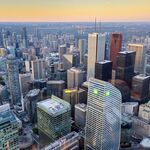I never claimed the older buildings were special, or that mixing old and new is unique to Toronto. But the older buildings filled with successful retail in front of a hundred-year old streetcar line juxtaposed to a neo-modernist 50-story building (which would be the 3rd tallest building in Vancouver for example) housing state-of-the-art movie facilities is something which could only be seen in a handful of cities in the world (and definitely not in Portland, Boston, Philadelphia, etc).
6 out of the 20 tallest residential buildings in North America are currently in Toronto. One is in San Francisco, one is in Vancouver, 7 are in NY, and the rest are in Chicago. By 2015 (with the completion of Aura, L Tower, Ice, etc) Toronto will have 6 more(!) buildings in that ranking. As 10 York, 88 Scott, etc. are added to the equation Toronto's lead will be furthered.
Mind you I personally prefer mid-rise projects, but to deny that these towers have become and will continue to become iconic for Toronto is ridiculous.




